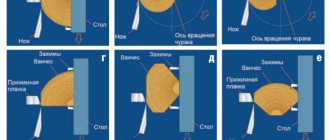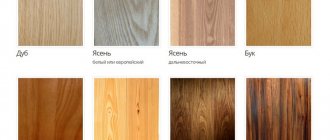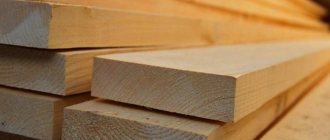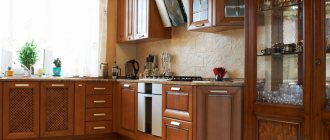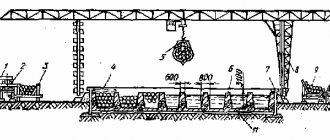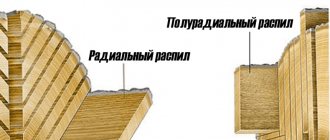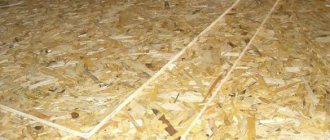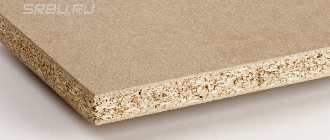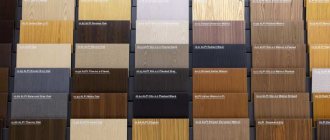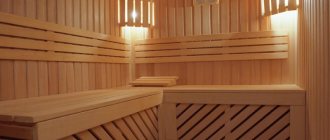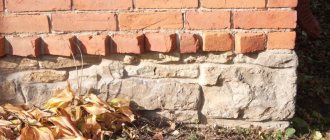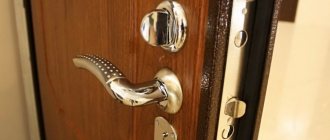The timber industry complex continues to live in the conditions of the “commodity rally” that has been protracted since the coronavirus crisis. The shortage of wood raw materials and lumber continues, prices continue to rise, industry organizations are prolonging the inclusion of a number of products in LesEGAIS to limit their supplies abroad. Whether you like it or not, even large enterprises are starting to think about maximizing cost reduction and saving resources. This also applies to veneer. It’s no secret that after peeling and drying, non-format, piece veneer makes up about 30% of the product.
If you consider that on average about 5 meters of veneer come out of one block, then the “waste” is almost 1.5 meters. How many cubic meters of finished raw materials are produced per shift even at a small enterprise? Perhaps, if you combine together the non-format “scraps” of material obtained during the day, you can easily cover a city highway with this canvas.
Or maybe the problem was “inflated”?
Perhaps those who are not yet experiencing difficulties with supplies, replenishing warehouse stocks and ensuring production volumes may think that the situation has been exaggerated and inflated to such a scale by the industry media and professional associations. Yes, there are some difficulties, but don’t change the technical process that has been fine-tuned over the years because of such noise, and don’t hastily modernize the splice lines.
However, the usual market structure has already gone off the rails under the influence of a number of factors. The disruption of supply chains first led to a shutdown of capacity at many enterprises, and then to their overload with a shortage of warehouse stocks.
Demand is high, there is a shortage of raw materials - the cost has to be increased, which leads to higher prices for components.
The exit of a number of large players from the market also had an impact - because of this, the increased load had to be distributed among those remaining in the ranks. And this is on a global scale. Among the leaders in the production of plywood (and therefore veneer) are the USA and China, and during the first wave these countries simply dropped out of the game. According to the Lestekh Association, China's share in total plywood production in 2022 decreased from 66.7 to 44.8%. Naturally, many who purchased products on the Asian market also paid attention to the Russian market. As a result, in 2022, domestic enterprises exported almost 2.9 million m3 of plywood abroad - 5.6% more than in 2019.
And we must not lose sight of fires, reduction of forest resources and poor disposal of wood waste. It's time for our wood industry to embrace the circular economy, recycling and resource conservation. Otherwise, Russia, even with large forest cover, will sooner or later have to purchase raw materials abroad.
“People, unfortunately, do not understand that if they don’t deal with the problem now, then soon the problem will deal with them. I mean that soon the state will stop ignoring issues of resource conservation and the environment. After all, this unpleasant aspect combines many others, starting with a lack of resources, expenses of funds, in fact, the enterprise itself, and ending with damage to nature,” Timur Irtuganov, general director of the Association of Furniture and Woodworking Industry of Russia (AMDPR), assessed the situation.
Modern problems require fusion
If you look at the news report, it was in 2020-2021 that reports began to arrive from large manufacturers about modernizing their capacities, including veneer gluing lines. For example, at the beginning of this summer, Sveza announced on its official resources the launch of a new edge gluing line, which will allow sewing up to 10,000 cubic meters of veneer per year. Investments in the project amounted to about 50 million rubles. A year earlier, the plant put into operation Japanese raw veneer gluing lines at its enterprise in Kostroma.
Public and scientific figures from the woodworking industry and practicing manufacturers agree on one thing: the stage of splicing small-format pieces of veneer cannot be bypassed, especially in the current realities. Otherwise, the cost of the product will be unjustified.
“I will say more, without the use of veneer gluing technologies, the plywood will come out literally golden. After all, the highest quality format sheets are intended for outer layers and facades. The inside is usually just veneer, glued from irregular pieces. Composing an entire package entirely from perfect format veneer is very wasteful.
The cost of plywood, despite the high cost of glue (this component accounts for about 25% of the total price), mostly includes the costs of producing veneer, drying it, etc. Based on this, gluing pieces to normalize the size of veneer can give on average up to 30% savings. Even taking into account the waste generated when cutting edges.
The final figure, of course, depends on many factors, such as the scale of the enterprise, its technical resources, financial capabilities, etc. However, costs are definitely significantly reduced,” emphasized Elena Stenina, associate professor of the Department of Management in Technical Systems and Innovative Technologies of USFTU.
“The presence of such and similar systems allows the enterprise to reduce the requirements for material resources, because small-sized birch veneer raw materials are more accessible on the market and often have a lower cost. It also helps to reduce the amount of waste and avoid the need to introduce additional operations for its use or recycling,” explained Plytec regional director Mikko Pilsi.
Gluing lines are also used in the furniture industry, where, at first glance, the volumes of veneer used are not even nearly as large as in the production of plywood. Moreover, it is furniture makers who are clearly aware that reasonable consumption of veneer will help save the country’s forest resources.
“The use of veneer in the furniture industry makes it possible not only to satisfy the needs of a number of buyers who cannot afford natural solid wood, but also to simply save commercial wood. Roughly speaking, one log will make about four dining tables. But if we make natural veneer from it, it will be enough to make 40 tables from high-quality chipboards by cladding.
This is if in global terms. Within the furniture production itself, veneer splicing makes it possible to more profitably produce “shirts” for large objects, such as large cabinet furniture and door leaves,” noted Roman Tarasov, chief technologist of Timokhiny Derevyashki LLC.
Photo: sveza.ru
Preparation of raw materials
Natural wood material is used as raw material. Both inexpensive pine and varieties of more valuable hardwood are used here. The technological process of preparing raw materials depends on the choice of manufacturing method. There are 3 ways to make veneer:
- Peeling;
- Planing;
- Sawing.
When using the peeling method, so-called churaki are made, which are part of the tree trunk. The length of the logs ranges from 0.8 to 3.2 m. For the production of sliced veneer, blanks of at least 1.5 m are used. The maximum diameter of the blank depends on the capabilities of the processing mechanisms. The minimum diameter size is 18 cm.
- The planed material is made from blanks with a diameter of at least 22 cm, after which square beams are made from them.
- Requirements for blanks:
- Minimum number of knots;
- No wormholes;
- No cracks or rot.
Rotary cut veneer
The technology for producing rotary-cut veneer consists of cutting the outer thin layer of wood from a rotating piece. The cutting process occurs in a spiral manner as the diameter of the trunk decreases. Sheets of such veneer are large in both width and length.
But cutting along the annual rings affects the appearance of the material. The wood structure here looks distorted, it has almost no resemblance to the appearance of sawn boards. Finished sheets are most often intended for the production of multi-layer plywood.
Production by sawing
The sawing method is the oldest existing method of producing veneer.
It is similar to the process of making boards. Only the thickness of the finished material here ranges from 1.2 to 10 mm. Unlike peeled specimens, sawn material completely preserves the natural structure of the wood pattern. Therefore, it is used for decorative purposes. The disadvantage of this method is the large amount of waste, since a significant part of the raw materials turns into sawdust.
Production of sliced veneer
The planing method, like sawing, preserves the natural pattern of the wood structure, only here knives, rather than saws, are used.
If we compare planing with peeling technology, where knives are also used, then here veneer is produced not by circularly cutting the surface of a rotating workpiece, but by removing layers from the planes of the timber. Depending on the types of machines used, the knife moves along or across the direction of the wood fibers.
Fine-line veneer
A modern natural material with properties similar to plastic. Distinctive features of fine line are its stability under conditions of temperature changes and resistance to high levels of humidity. Initially, the peeling method is used here. Inexpensive wood species are usually used as raw materials.
Thin blanks are glued together under a press, the surfaces are painted to look like valuable wood or any other material.
Despite the presence of glue and coloring components, fine line is considered an environmentally friendly natural coating, since its basis is natural wood. Its improved plasticity facilitates the process of processing and decorating surfaces.
One of the features of this material is both its advantage and disadvantage. The surface turns out to be too ideal, without the presence of natural flaws that are inherent in other types of veneer.
Veneer coating gives the products a refined appearance. Thicker layers can also improve the physical properties of decorated surfaces.
You can make veneer with your own hands, but without skills in working with wood and without access to a certain set of woodworking machines, this will not be possible.
Do you have woodworking skills in your arsenal of abilities?
What does the industry have at its disposal?
As experts note, so far in the domestic woodworking industry, two technologies for veneer splicing are most actively used: edge gluing and miter splicing. Why is it so little, given the modern development of technology? Doesn't anyone offer promising developments?
A search for topical information on the Internet produces data on patents, but quite old ones and often from foreign industrialists. For example, an application with a publication date of October 10, 1995, authored by Katsuji Hasegawa, “A method for gluing veneer sheets, including creating channels on one of the surfaces of the sheet, applying an adhesive layer, joining the sheets, pressing with hot air supplied into the channels.” You can also find patents from domestic industrialists, but dating back to the Soviet period.
“Plywood production and veneer production are perhaps one of the most prosperous niches in woodworking. However, only two splicing technologies are used in this direction today, and radical progress has not yet been observed. Because the industry as a whole is in some decline, and it requires significant dividends to develop new techniques.
Of course, after the recent presidential decree, the process has intensified, but it still remains very sluggish. After all, in any case, everything depends on investors, and they are interested in quick income, which is almost impossible to get from woodworking. We are not an oil-producing industry,” Elena Stenina stated with regret.
The situation is similar in terms of specialized equipment.
“Our machine tool industry is still in the same decline as woodworking. Much has been lost since the days of the USSR, including due to the severance of ties between previously “brotherly” countries. There were good manufacturers of specialized lines in Ukraine, but today we hardly work with them. In general, I think that suitable solutions can be found here, among domestic companies, but large enterprises, as expected, purchase foreign lines, because their quality has already been tested by time.
The leaders in the production of equipment for veneer splicing are Japan, Finland, and Switzerland. China takes a rather active position, but so far exclusively in the segment of small semi-automatic and automatic machines. Although I wouldn’t be surprised if in a couple of years they bring interesting offers to the market in the segment of large industrial machines,” Elena Ivanovna suggested.
Edge gluing
So, there are only two active splicing technologies. They differ in methods and training schemes, and each of them has formed its own strong groups of adherents.
“As part of a pilot project for processing wood waste, we commissioned a line for gluing raw veneer. When rolling veneer, waste such as “pencil” and veneer is generated, which make up 30% of the total volume of raw materials. All these residues can now be used for the manufacture of finished products, and this is 2500 m3 of non-format veneer per year,” the press service of the Sveza plant shared this data after the launch of the line in Kostroma.
According to news reports, you can see that many large plywood mills (Inzensky woodworking plant, Ilim-Timber, Murashinsky and Syktyvkar plywood plants and others) in different years, as part of modernization, often installed automated ribbing lines.
“Overformat sheets and veneer sheets with defects are fed to the defect cutting and edge gluing line. There, full-size veneer sheets are formed from non-format sheets or from piece veneer with preliminary cutting of defects. The defect detection system measures the length and thickness of the veneer sheets, as well as the size of defects in the middle and along the edges of the sheets. If the size of the defect is greater than the maximum permissible value, then the scissors automatically cut out the defect,” chief technologist Tatyana Tokareva describes the technology in her material “LVL Production Technology.”
After eliminating the defects, it is necessary to align the edges of the veneer for better gluing - guillotine shears are also used for this. The waste strips obtained at this stage are processed into wood chips. In expensive lines, two knives are often used, as well as laser marks. This not only ensures a perfectly smooth cut, but also increases productivity. At some enterprises there is another stage of edge jointing. Although usually on lines from a higher price segment the scissors work in such a way that no additional operation is required.
For reference When producing veneer, an important point, which will also allow you to achieve maximum useful yield, is the correct centering when installing the block in the peeling machine. This operation is greatly complicated by the variety of cross-sectional shapes of the churaks and the presence of irregularities along their length. Centering and loading devices (LCDs) allow you to perform the basing correctly.
Beavers | How veneer is made and equipment for its production
Veneering is the process of covering wood panels with a thin sheet of wood taken from a single log. This method is quite in demand and popular today, especially in furniture and interior decoration. However, not everyone knows and understands how veneer is made. This is a complex technological process that requires some effort and special tools.
What equipment is needed to make veneer?
Veneer production is carried out in three different ways - sawing, planing and peeling. To do this, you will need the following equipment for veneer production:
- Drying chamber.
- Device for measuring humidity.
- Special machine for cutting veneer. The most commonly used machines are a peeling, sizing or cutting machine. They are selected depending on how the veneer is made.
Peeling machines make it possible to obtain transverse chips of small thickness, cut from short logs - churak. A special knife cuts a thin sheet of wood from a rotating log.
The calibration machine passes logs with a cross-section. The knives are located on the rotor in such a way that they allow you to process different logs. The cutting machine is designed for cutting sheets.
These are large machines that allow you to cut sheets of any size.
Melt, thread or butt - how to choose?
Next, glue is applied to the aligned blanks and connected “edge to edge”, forming a single continuous web, which is subsequently divided into segments of the required size.
Edge gluing schemes differ in the adhesive materials used (tape, adhesive thread and hot melt adhesive), the type of gluing and the direction of feeding veneer sheets (longitudinal or transverse).
“As diverse and individual as the veneers offered on the market are, so varied are the opinions about which re-gluing method is the best for which product. It is impossible to establish firm rules on the issue of when butt edge gluing should be preferred to gluing veneer with thread.
The criteria for choosing the most economical solution depend on many factors, such as, for example, the size of the enterprise, the quality of the veneer, the type of finished product, etc. Butt-glued seams, of course, are among the highest quality,” experts write in their materials KUPER brand.
The most common option is gluing sheets across the grain widthwise using adhesive thread and thermoplastic glue. According to Tatyana Tokareva, glue threads give the veneer good tensile strength across the width, and glue dots prevent them from overlapping. When forming a package, before pressing, the format sheets are laid in such a way that the arrangement of fibers alternates - this increases the strength of the plywood.
Many experts believe that edge gluing is a more industrial technology that provides maximum quality. The main advantage of the method is the absence of a joint, which has a positive effect on both the aesthetic and physical and mechanical properties of the finished product. More than 60% of sheets produced using this technology make it possible to raise the grade of plywood from category C to categories B and BB. For 1% edge-glued veneer, the possible increase in the plywood grade coefficient will be 0.4-0.7%.
Photo: tdgoodhouse.ru
Peeled veneer production technology - truefactory
Types of raw materials
Veneer manufacturers use wood of various species, with interesting colors and textures. Wood shades vary from white, creamy, light brown to chocolate and bright red. The most commonly used types of wood with a beautiful texture are:
- Pine - wood belongs to the category of soft species, veneer is inexpensive, light in color, is immune to fungi, and releases phytoncides into the atmosphere. However, wear resistance is quite low; products with pine veneer must be treated with care;
- Birch is a common tree in Russia. Its wood is inexpensive and belongs to hardwood. Birch veneer has a pleasant color of natural wood, but it is easily tinted, and if desired, you can get many new shades;
- Oak is a hardwood that is not afraid of high humidity and is resistant to insects. Oak veneers mostly have dark brown tones, but there is a variety of white oak with sandy and light brown wood shades with small inclusions;
- Karelian birch is a rare wood and belongs to the hard species. The veneer has a beige color with a hint of mother-of-pearl. Used for the production of exclusive and expensive products;
- Linden is a soft wood with a delicate yellowish-pinkish tint. Linden veneer is used in the manufacture of inexpensive furniture;
- Cherry is a softwood that has a reddish-brown hue that may darken over time. Cherry veneer looks noble and elegant and is used in the manufacture of luxury furniture;
- Maple - its wood is classified as hard wood. Maple veneer is successfully used to decorate products made from less valuable wood species. It has a light or light yellow tint. Of particular value is the bird's eye texture characteristic of maple. Maple veneer, like wood, has good resonant properties, which is why it is often used for making musical instruments.
Bonding by mustache
The production of large-format construction plywood requires gluing the veneer along its length, and in this case miter splicing technology is most often used. The end edges of the veneer pieces are cut into wedges, forming a so-called miter on bevel machines. On forums and in virtual professional communities it is often pointed out that with this type of splicing, traces of glue often remain at the joint even after sanding. They also note that cutting mustaches is a labor-intensive process associated with a large consumption of wood. However, such inconveniences mainly occur when performing operations manually or on inexpensive manual or semi-automatic machines. Professional industrial automated compaction lines in most cases do not have such disadvantages.
“Our equipment uses Finnish technology for miter jointing of veneer sheets. Its peculiarity is that edge milling occurs when veneer sheets pass at high speed - up to 2 m/s, which ensures good quality with high productivity.
Machines using this technology are designed for splicing veneer along the length of the fibers. In the production of large-format plywood, it is length splicing that is most in demand, since such veneer is extremely difficult, and often simply impossible, to obtain immediately as a result of peeling, since peeling equipment is limited in the length of the block to 2 m.
By means of this splicing, large-format sheets can be obtained when peeling veneer from small-sized veneer raw materials up to 5 feet without the need to purchase an expensive 8-foot peeling machine. And when producing plywood measuring 5x10 m or more, this technology is practically the only way to obtain new added value to the products and enter new markets,” explains Mikko Pilsi.
Photo: baltispoon.ee
Veneer machine
Expensive varieties of timber are excellent raw materials for creating furniture, but not all people can afford such expensive products.
In order to save valuable types of wood and reduce the cost of the final product, veneer was invented. This material is extremely popular today for cladding furniture.
Veneer 100% repeats the pattern, texture and shade of natural wood.
To create veneer, factories use special machines. Veneer can be:
- peeled
- planed
- sawn
Accordingly, there are three types of veneer production machine.
Peeling machine for veneer production
To implement peeling of veneer, the raw material must be pre-treated with steam in order to increase ductility. After this, the logs are fed to a debarking machine, where the bark is removed from the workpiece, along with dirt and sand, which often cause the peeling knives to quickly become dull.
Using a saw, the logs are cut into logs of a certain length. The churak must first be rounded, after which you can begin peeling. The veneer strip that comes out of the peeler is placed on a conveyor that feeds it to the shears. Scissors cut the veneer into sheets of the required format.
Along the conveyor, the veneer is placed into a bundle, which is taken out from under the shears and delivered to the dryer using an electric loader. The product is dried in a roller dryer, then it is sorted on a conveyor and put into bundles by grade. Defective sheets can be glued together.
If there are knots on the sheets, they are sent to a veneer repair machine, where the defects are removed and decorated with veneer inserts.
To increase the productivity and convenience of the operator, the machines are equipped with hydraulic lifts-center finders, which themselves determine the appropriate axis of rotation of the workpiece and combine it with the axis of rotation of the centering shafts.
Peeling of steamed wood is used for pine, alder, and birch timber. Plywood is made from peeled veneer.
Veneer planing machine
First of all, the ridges are subjected to transverse cutting. During this procedure, the ridges are cut into pieces of the required length. All sections are sawn lengthwise, resulting in a double-edged beam. Sometimes it is sawn in half. After this, the vanches are subjected to heat treatment in a steaming chamber or autoclave.
Next, the vanches need to be planed on a veneer cutting machine. Sliced veneer is dried in roller dryers, trimmed and packed into bundles. Each set contains a specific drawing. The wood shade and pattern must match in each set.
It is for this reason that the sheets of veneer that come out of each vanches during planing are folded, dried and packed into bundles exactly in the order in which they came out of the planer. When three vanches are planed at the same time, the veneer from each of them is folded into three different bundles.
A bundle of veneer that is completed, dried, packed and tied with twine is called a knol.
- radial
- tangential
- radial-tangential
- tangential-end.
The most attractive raw material for creating veneer is oak wood. This veneer is used for cladding rustic furniture in the luxury segment.
In addition to oak veneer, in specialized stores you can find maple, beech, linden, and mahogany materials.
Veneer stitching machine
Veneer is cut using specialized machines. It has a rather thin and fragile structure. In order to finish the surface with veneer, it must be joined together to obtain a sheet that is rolled into rolls. Veneer is joined in two ways:
These methods are equally popular in furniture production. Veneer stitching is carried out on a machine or manually. For small workshops, manual devices for gluing or stitching veneer have been developed. Using a special device, the adhesive or thermal thread is heated and applied in a zigzag to the main side.
Hand stitching is becoming less and less common, mainly in antique, restoration and designer workshops.
Working in tandem
As the speakers note, in many industries, insertion lines work in conjunction with edge gluing lines, which allows for the most varied and high-quality products to be obtained.
“Ribbon-glued sheets of longitudinal veneer are fed to the cutting line. If the veneer sheet meets the requirements, then it enters the sheet alignment conveyor. This conveyor operates continuously and moves the veneer sheets to the sizing and embedding unit. The sizing heads of the jointing machine align the ends of the veneer sheet, cutting it to the required length.
Then the bevel heads bevel both ends of the veneer sheet into a miter on opposite sides of the sheet. The length of the bevel or the angle of cutting the mustache is adjustable. The length of the whisker is 20-25 mm. At the insertion line, veneer sheets are also prepared for overlap jointing,” says Tatyana Tokareva in her material about LVL production.
“In production, as a rule, both technologies are used, since when assembling a package of plywood sheets, veneer sheets with both longitudinal and transverse fibers are alternately used. But without the technology of splicing veneer along the length of the fibers, it will be impossible to obtain longitudinal veneers longer than 2.5 m, which limits the range of plywood formats produced,” emphasizes Mikko Pilsi.
